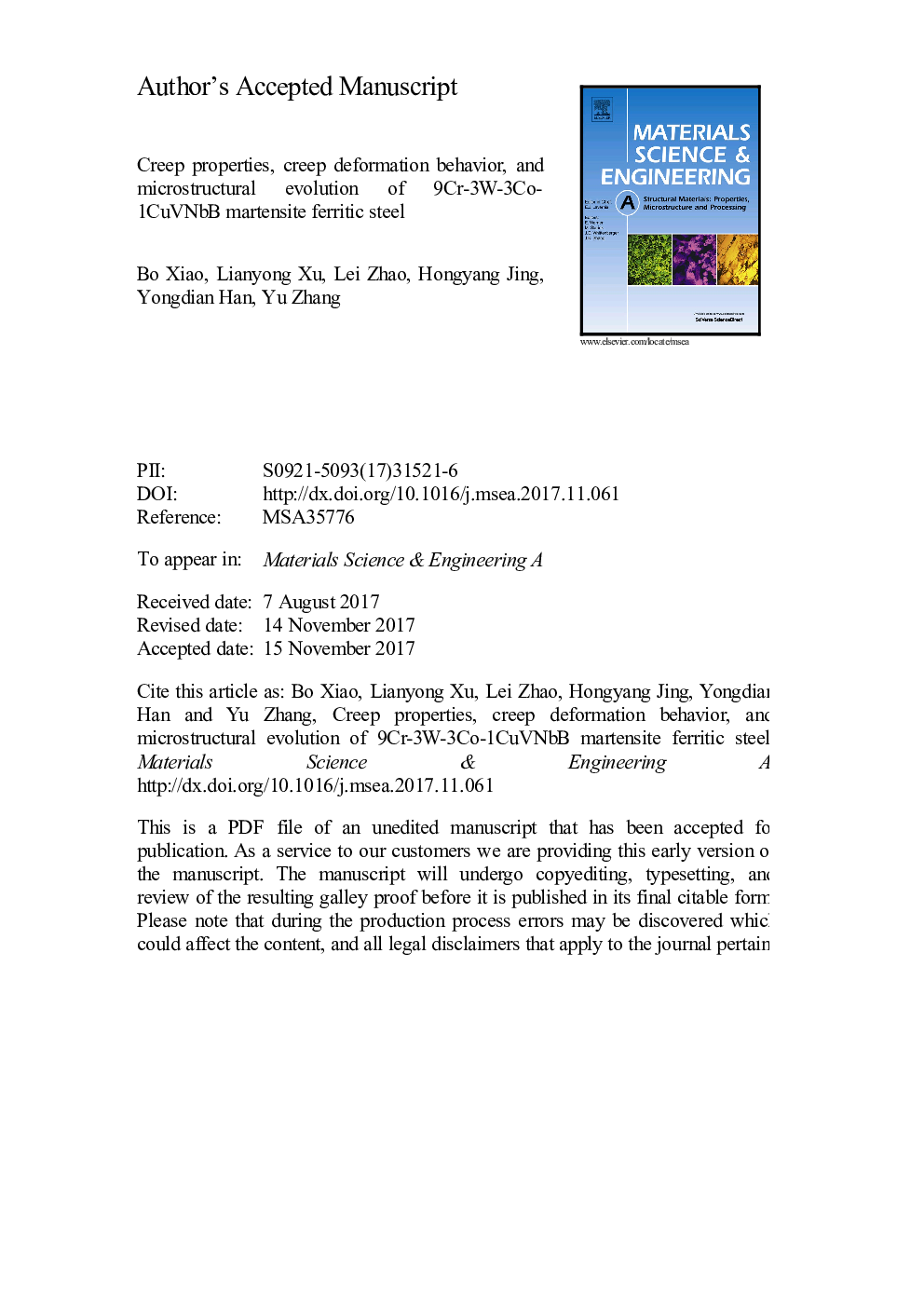| Article ID | Journal | Published Year | Pages | File Type |
|---|---|---|---|---|
| 7974302 | Materials Science and Engineering: A | 2018 | 53 Pages |
Abstract
Creep deformation behavior and microstructure evolution of G115 steel were systematically investigated for temperatures of 625-675 °C under uniaxial tensile stress of 120-220 MPa. The relationship between minimum creep rate and applied stress followed the Bird-Mukherjee-Dorn (BMD) equation. The modified BMD equation was proposed using threshold stress to elucidate the actual creep deformation mechanism. The values of the threshold stress were determined to be 177.8, 91.4 and 87.6 MPa at 625, 650, and 675 °C, respectively. The true creep activation energy and the true stress exponent were 275.76 kJ/mol and 6, respectively. Thus, the dominant creep deformation mechanism was identified as dislocation climb. Three types of precipitates can be revealed after creep deformation: W-rich Laves, Nb-rich MX, and Cu-rich phases. The creep damage of G115 steel after creep deformation was characterized by martensite cracks and martensite fractures owing to the hardness and brittleness of the lath martensite structure. Further, a dense array of deep and equiaxed dimples appeared in the central region of fracture surfaces under the tested creep conditions. Ductile fracturing was the main fracture mechanism during creep deformation.
Related Topics
Physical Sciences and Engineering
Materials Science
Materials Science (General)
Authors
Bo Xiao, Lianyong Xu, Lei Zhao, Hongyang Jing, Yongdian Han, Yu Zhang,
